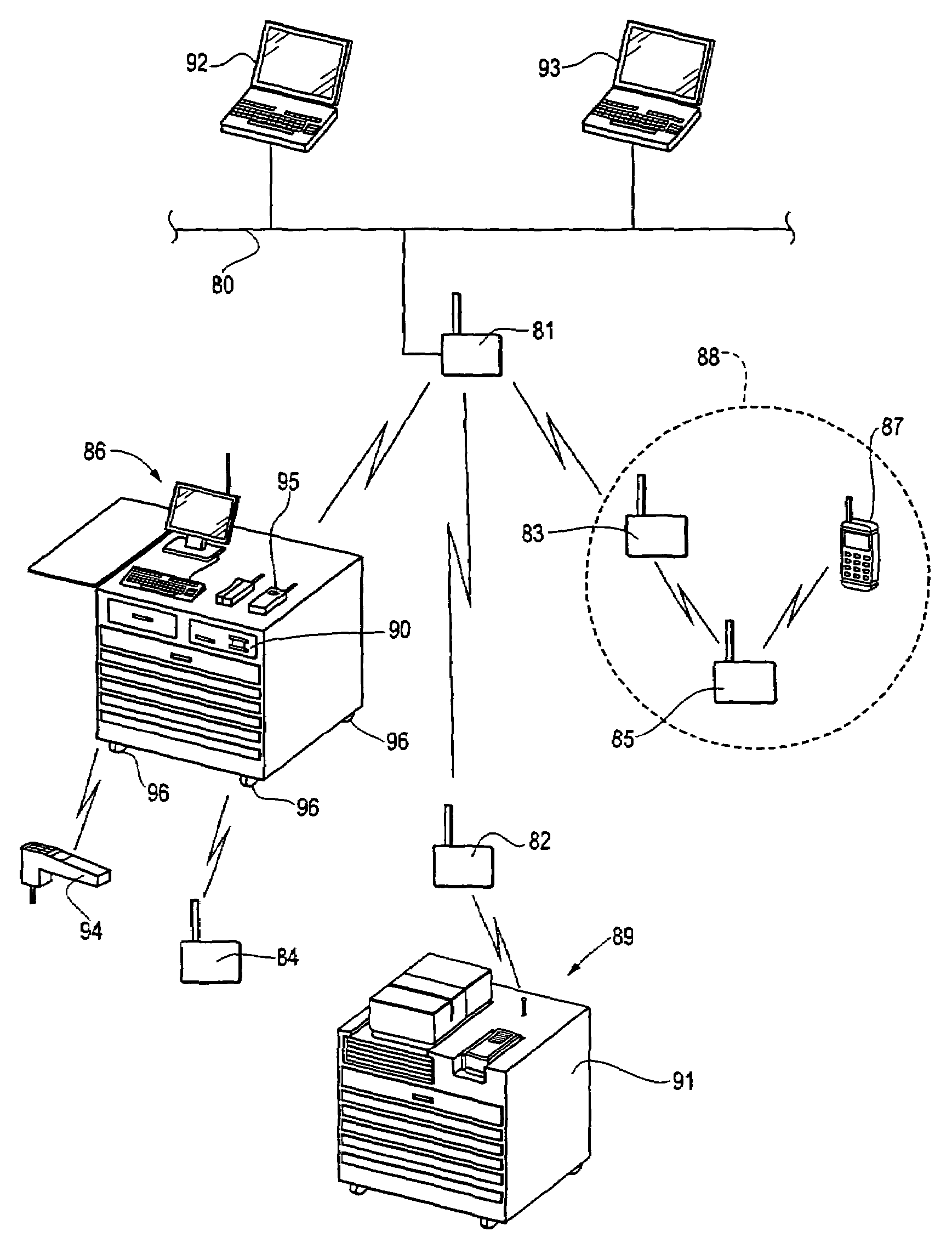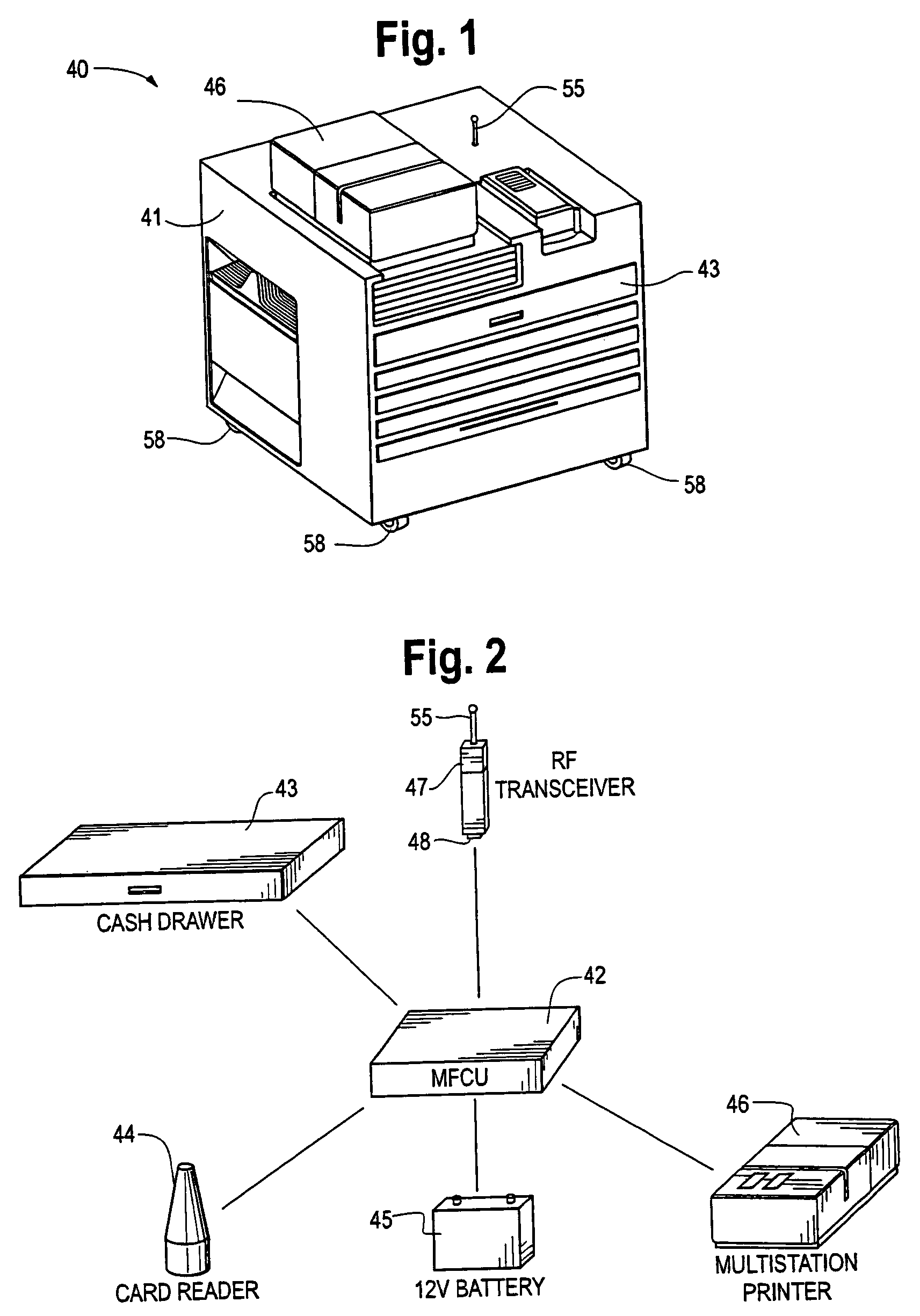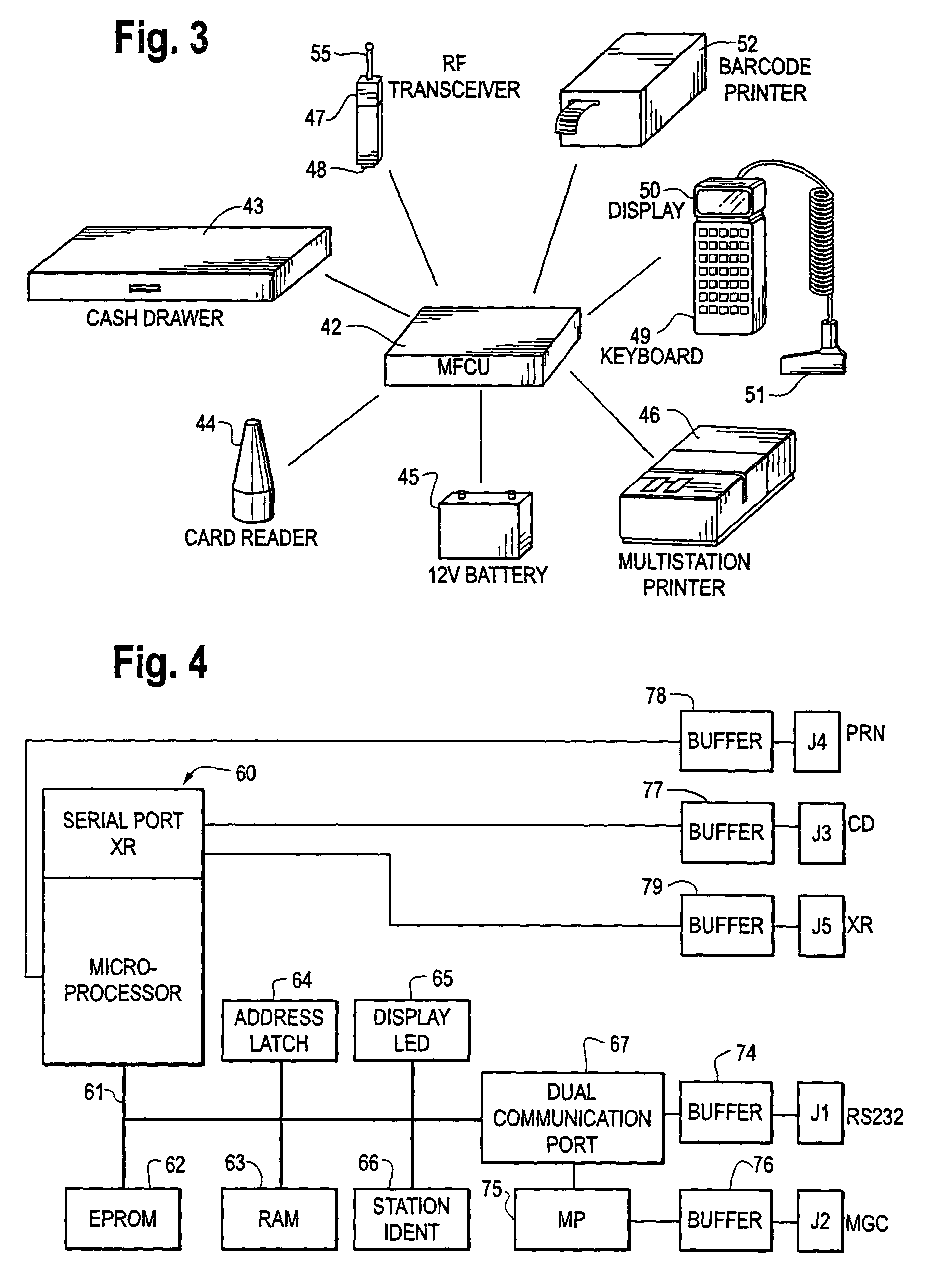Transaction control system including portable data terminal and mobile customer service station
a mobile customer service station and data terminal technology, applied in power management, current supply arrangements, sensing by electromagnetic radiation, etc., can solve the problems of affecting the input/output capabilities of many computer devices, affecting the service life of customers,
- Summary
- Abstract
- Description
- Claims
- Application Information
AI Technical Summary
Benefits of technology
Problems solved by technology
Method used
Image
Examples
Embodiment Construction
[0050]FIG. 1 is a perspective diagram illustrating a mobile customer service station built in accordance with the present invention. The devices found in the illustrative peripheral LAN are battery powered and therefore must conservatively utilize their radio transceivers. The arrangement of the communication network, communication protocols used, and data rate and power level adjustments help to optimize battery conservation without substantially degrading network performance.
[0051]In the embodiment illustrated in FIG. 1, the station 40 comprises a radio transceiver 47 (having an antenna 55), the cash drawer 43, and the multi-station printer 46. Other components, such as the battery 45 and the multi-function control unit 42 are mounted within a housing or an enclosure 56 of the console 41. The enclosure 56 is mounted, in turn, to a wheeled base or chassis 57 which serves as a component mounting structure of the console 41 of the customer service station 40.
[0052]The enclosure 56 de...
PUM
 Login to view more
Login to view more Abstract
Description
Claims
Application Information
 Login to view more
Login to view more - R&D Engineer
- R&D Manager
- IP Professional
- Industry Leading Data Capabilities
- Powerful AI technology
- Patent DNA Extraction
Browse by: Latest US Patents, China's latest patents, Technical Efficacy Thesaurus, Application Domain, Technology Topic.
© 2024 PatSnap. All rights reserved.Legal|Privacy policy|Modern Slavery Act Transparency Statement|Sitemap



